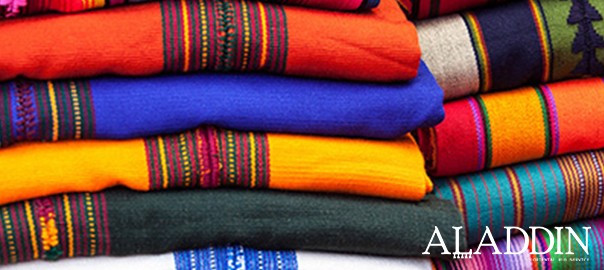When you’re antique oriental rug experts, like we are at Aladdin Oriental Rug, you deal with tons of rugs made with wildly different techniques. One very commonly shared aspect of vintage oriental rugs is their use of organic dyes. Here’s a guide to natural and organic dyes used in oriental rugs.
Natural Rug Dyes
For thousands of years, rugs have been made in the Middle East and Asia using organic and natural dyes. In the Middle East, many rugs were made using a red pigment made from ground down and dried Madder root and Cochineal. Blues came from indigo, yellows from weld or even turmeric, and green effects were achieved through a process of dying with both indigo and weld. Brown and camel tones were achieved through walnuts.
Natural rug dyes in oriental rugs have many varying details that are quite appealing to the eye. Natural green tones often have flecks of yellows and blues – a non uniformity to the color. This is because of the natural irregularities in handspun wool, and the use of natural dyes made in small unique batches. In order to create a natural green color, you will need to dye wool blue, then dying it again with yellow. Natural dyes have a bit more natural transparency than synthetic ones, so the natural color of the wool often shows below the dye, creating an look of vibrant and lustrous irregularity.
Natural dyes are incredibly stable, surprisingly, lasting amazing amounts of time. Some museums have tapestries or oriental rugs in their collections of nearly 500 years of age, which have perfectly retained their bright colors. Natural dyes are resistant to sunlight fading, or moisture based running. This is one of the reasons we’re so fond of the use of natural dyes – that in enjoying the rugs made with them, you’re enjoying the benefits of a historical and culturally developed artistic technique, while also enjoying long-term use of a truly durable and well made product.


